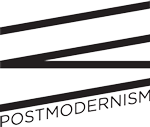PostModernism Museum continuously seeks to apply the concept of audience developpment within all its programmes.
As a process, audience development employs a range of marketing tools such as research, publicity, communication and research, publicity, communication research, publicity, communication. As an ethos, audience development places the audience at the heart of everything the organisation does.
The Arts Council of England developed a definition that attempts to embrace this broad term: “The term Audience Development describes activity which is undertaken specifically to meet the needs of existing and potential audiences and to help arts and cultural organisations to develop on-going relationships with audiences. It can include aspects of marketing, commissioning, programming, education, customer care and distribution.”
Emphasis is also placed on the strong relationship audience development has with marketing, as audience development is also involved with building market share. It also focuses on finding audiences outside the mainstream –i.e. “new audiences” or “audiences from socially excluded groups”. Audience development also reflects the relationship with audiences that develops over time with a focus on the long term.
According to European Union, audience development is a strategic, dynamic and interactive process of making the arts accessible. It aims to engage individuals and communities in experiencing, enjoying, participating in and valuing the arts through various means including arts marketing and synergies with customer relations. Audience development embraces the long term process of attracting and engaging diverse and new audiences, as well as retaining them by establishing and maintaining strategic, dynamic and sustainable relationships. It therefore has both a widening sense (bringing new audiences) and a deepening sense (improving experience and deepening engagement of the current audience).
As well as widening access to culture, audience development is complementary to cultural education in schooling through activities conducted directly by cultural operators. It has cultural, social and economic benefits: cultural in the sense that it helps European works reach larger audiences and fosters meaningful engagement; social in that it is often about reaching young people and the disadvantaged, which has benefits for social inclusion; and economic in that developing audiences can also have the benefit of increased or new revenue streams.
(sources: ec.europa.eu, wikipedia)


